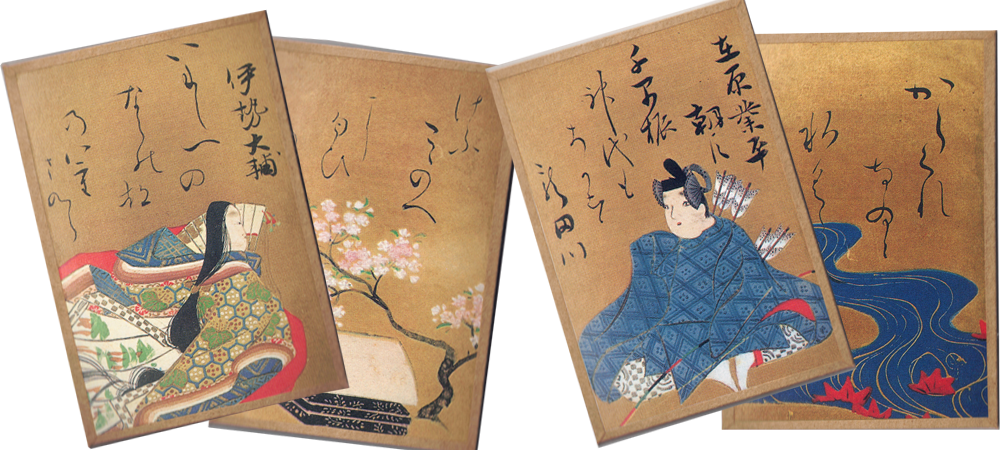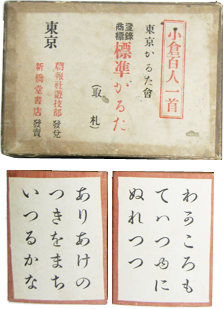The history of Ogura Hyakunin Isshu karuta's cards

At first, Ogura Hyakunin Isshu karuta was only played by feudal lords and nobles. But woodblock printing enabled mass production of the cards, and then it became a popular entertainment among common people during the Edo period (1603-1868).
Originally in Ogura Hyakunin Isshu karuta, a tanka was separated into two parts. The first half was written on a card called Kaminoku-fuda and the second half on a card called Shimonoku-fuda. But during the end of the Edo period and start of the Meiji period (1868-1912), Kaminoku-fuda was modified to a Yomi-fuda (card for reciters) which has the full version of the poem on it, so that people who had not memorized the poems could enjoy the game, too.
About apperance of Kyogi karuta's cards

In Meiji year 37 (1904), the journalist Kuroiwa Ruiko decided to hold the "1st Tokyo Karuta Competition" . At that time, the official rules of Kyogi karuta, which are similar to today's rules, were established. At the same time, he decided on a unified card called "Hyojun-karuta". Cards made with the old Hiragana font* have been replaced by the current Hiragana font cards.
* In Meiji year 33 (1900), according to the Elementary School Ordinance, the Hiragana typeface is set to the current font. Different fonts are called Hentai-gana.
Today, Kyogi karuta is a one-on-one game, the players use "tori-fuda" (cards for players). On tori-fuda, only the second half of a poem is written.
As the reciter reads the first half of a poem, players attempt to take the correct tori-fuda faster than their opponent.
Therefore, the reciter's reading cards "yomi-fuda" and cards for players "tori-fuda" are sold separately.

